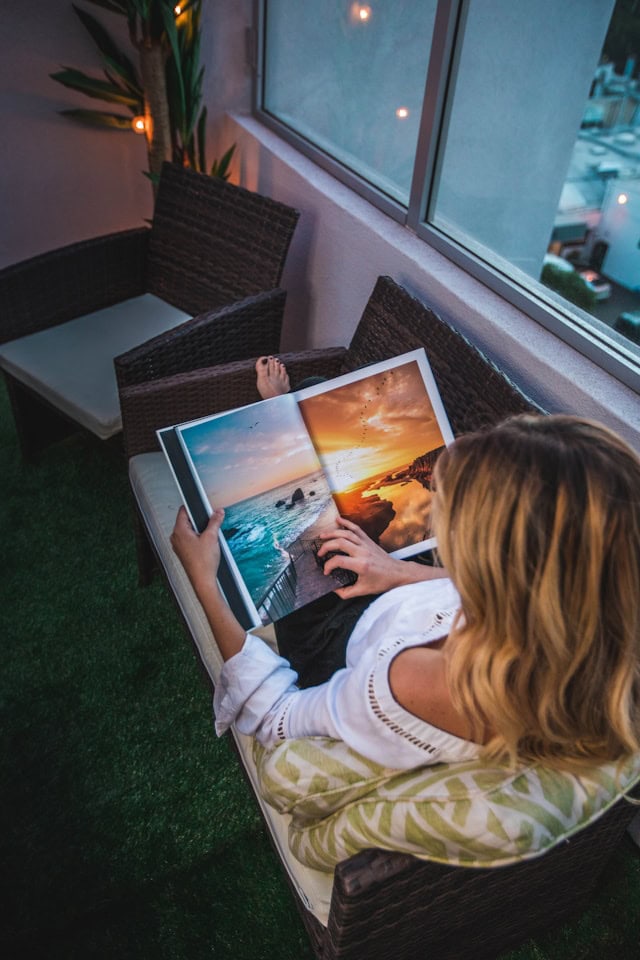Ad|Collaborative editorial post
In an era where digital media reigns supreme, there’s something uniquely satisfying about holding a physical book in your hands. The tactile sensation of turning pages, the smell of ink on paper, and the visual appeal of a beautifully bound book are experiences that digital platforms can’t replicate. This is especially true when the book in question chronicles your personal adventures. In this guide, we’ll delve into the process of documenting your adventures in a printed book.
Why Document Your Adventures in a Printed Book?
Before we delve into the how, let’s explore the why. Why should you consider documenting your adventures in a printed book? Firstly, a printed book serves as a memento of your experiences. Unlike digital files that can be lost or corrupted, a book is a physical object that can be held, displayed, and passed down through generations.
Secondly, the process of printing a book can be a rewarding adventure in itself. It allows you to revisit your experiences, reflect on them, and present them in a meaningful way. This can be a therapeutic and enlightening process.
Lastly, a printed book can be a unique gift or keepsake for friends and family. It’s a way of sharing your adventures with others in a personal and enduring format.
Choosing the Right Format for Your Book
When documenting your adventures in a printed book, one of the first decisions you’ll need to make is the book’s format. This will largely depend on the nature of your adventures and personal preferences.
For instance, a photo book might be the ideal format if your adventures involve a lot of photography. This type of book allows you to showcase your photos visually appealingly, with captions or short descriptions to provide context.
If your adventures are more narrative, a memoir or travelogue might be a better fit. This format allows you to delve deeper into your experiences and share your thoughts, feelings, and insights.
Alternatively, you might opt for a scrapbook-style format combining photos, text, and other memorabilia into a collage-like presentation. This can be a fun and creative way to document your adventures, especially if you have a lot of physical mementos to include.

Planning Your Book
Once you’ve chosen the format for your book, the next step is planning. This involves deciding on the structure of your book, the content you want to include, and the overall design and layout.
The structure of your book will largely depend on the nature of your adventures. A chronological structure might make the most sense if you’re documenting a single trip or event. A thematic structure might be more appropriate if you’re documenting a series of unrelated adventures.
In terms of content, you’ll want to consider what aspects of your adventures you want to highlight. This might include photos, journal entries, maps, ticket stubs, and other memorabilia. You’ll also want to think about the narrative you want to tell. What were the highlights of your adventures? What challenges did you face, and how did you overcome them? What did you learn along the way?
Finally, you’ll want to consider the design and layout of your book. This includes decisions about the size and shape of the book, the type of binding, the font and colour scheme, and the arrangement of content on each page. These decisions will largely be guided by your aesthetic and the nature of your adventures.
Printing Your Book
With your plan in place, the next step is to create your book. This involves compiling your content, writing content, designing your layout and the size of your book, and printing and binding your book.
Compiling your content might involve scanning photos, transcribing journal entries, and gathering other memorabilia. This can be time-consuming, but it’s also an opportunity to revisit your adventures and reflect on your experiences.
Writing involves weaving your content into a cohesive story. This might involve describing the context and significance of each photo, reflecting on your experiences and insights, and sharing anecdotes and observations. The goal is to create a narrative that is engaging, insightful, and true to your experiences.
Designing your layout involves arranging your content on each page in a way that is visually appealing and easy to follow. This might involve choosing a consistent colour scheme and font, creating a balance between text and images, and using design elements like borders and backgrounds to enhance the visual appeal of your book.
Finally, print your book with a book printing company that has a good reputation. Make sure you check the reviews and check the services that they offer, and ask for some samples of recently printed work.
Photo by Roberto Nickson on Unsplash






